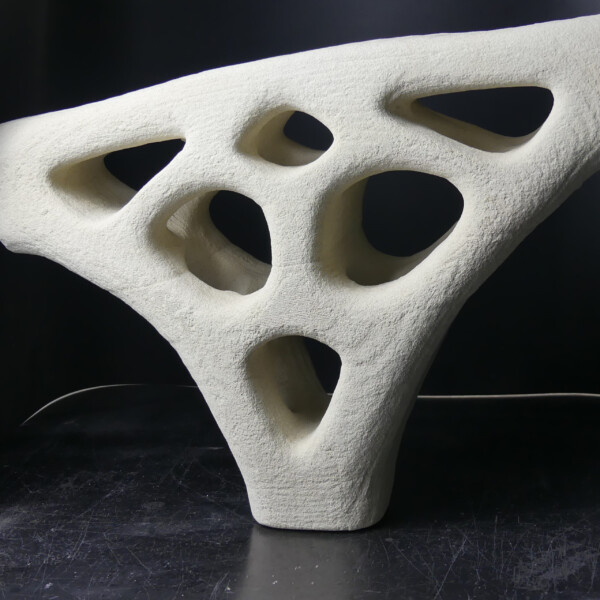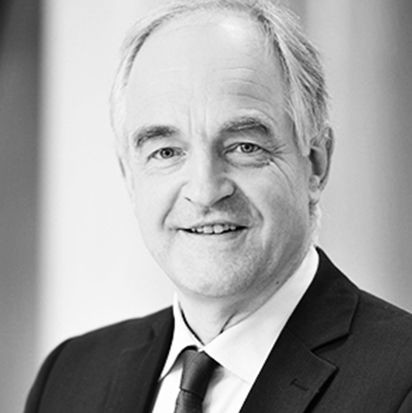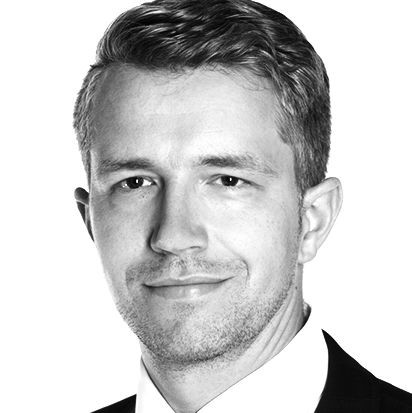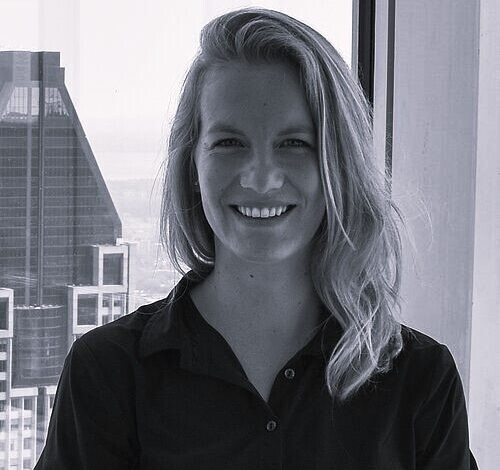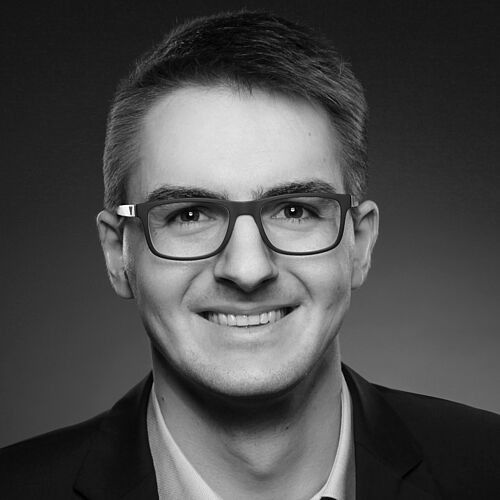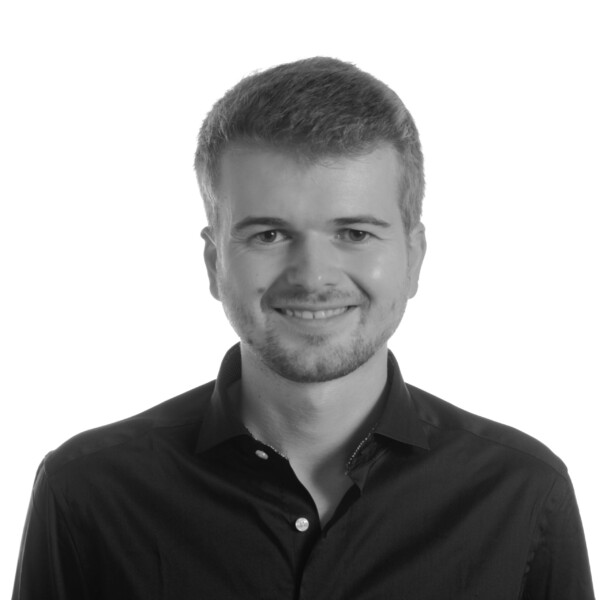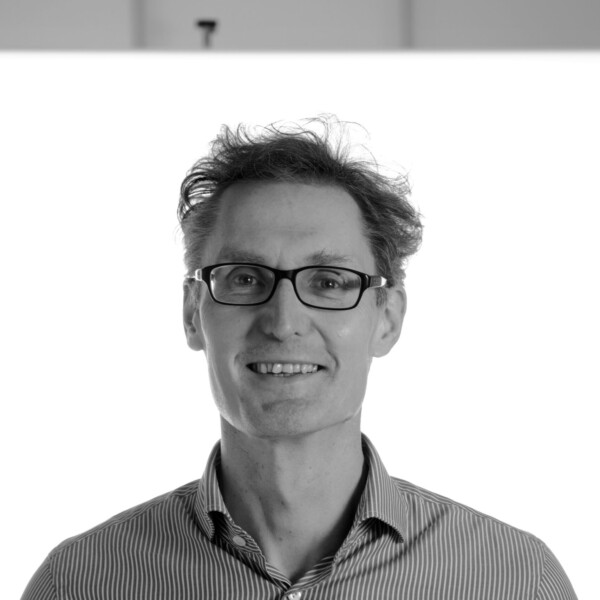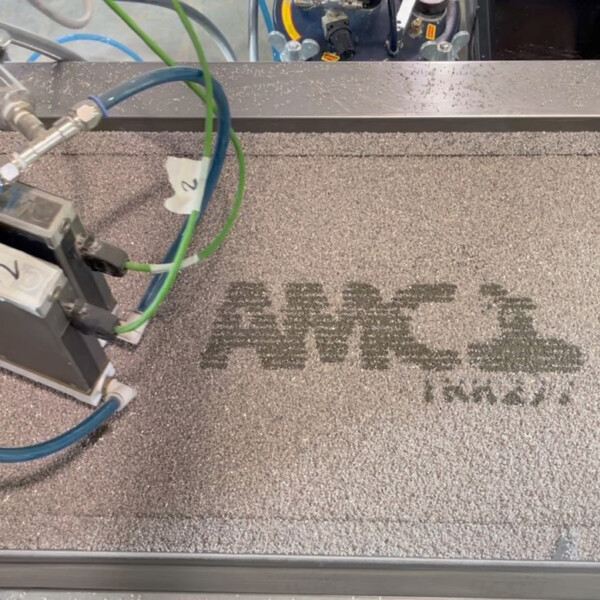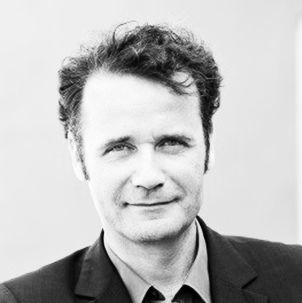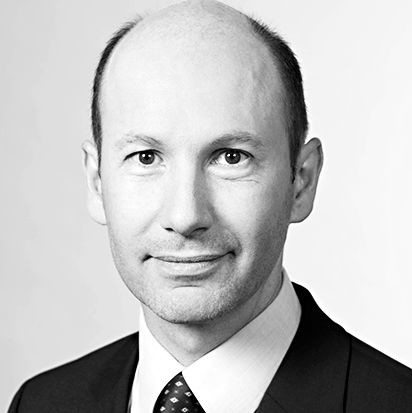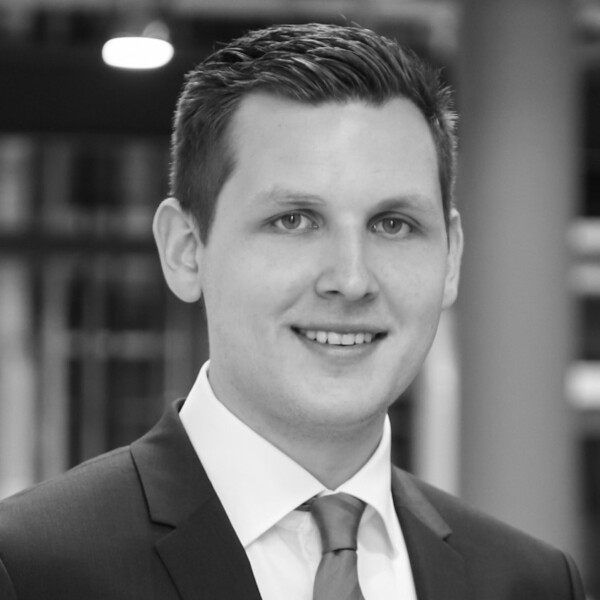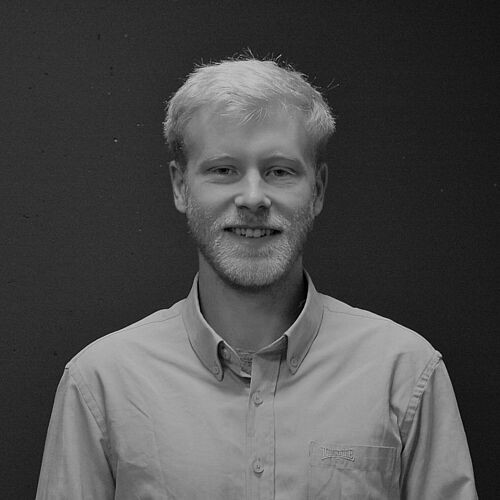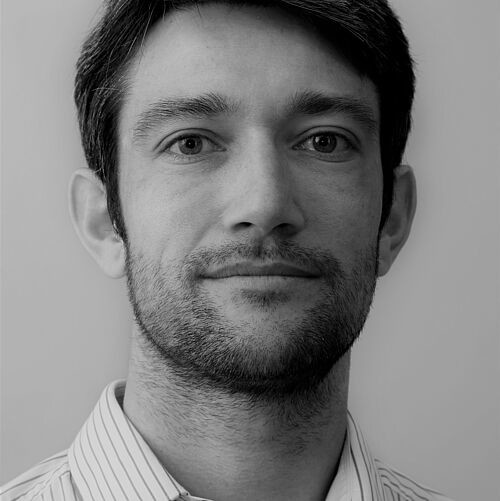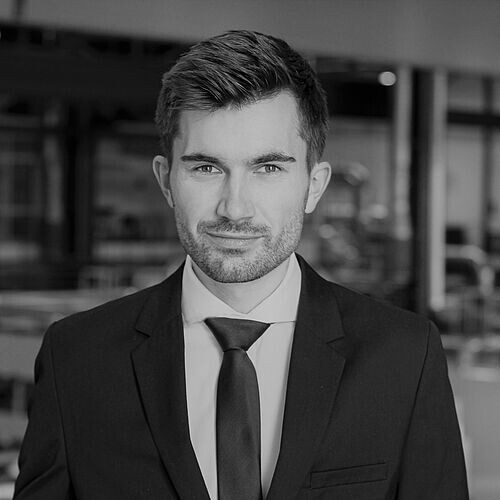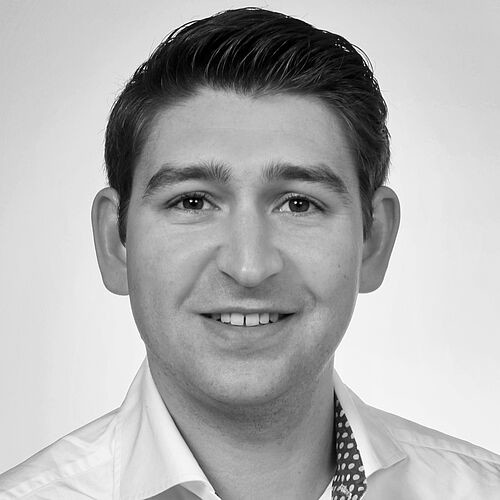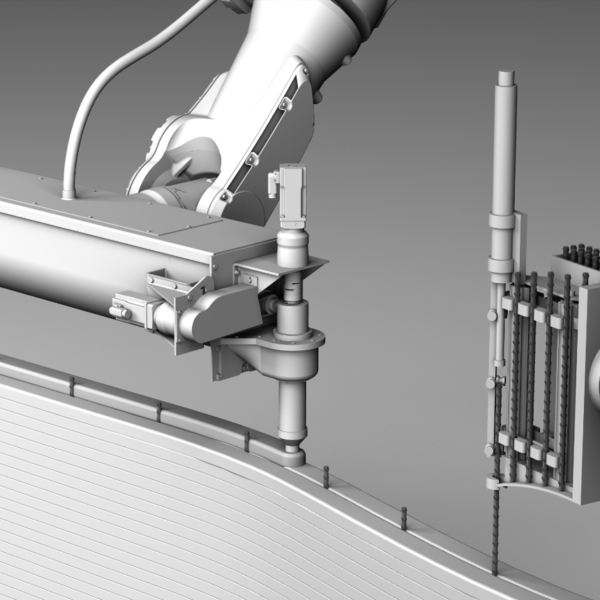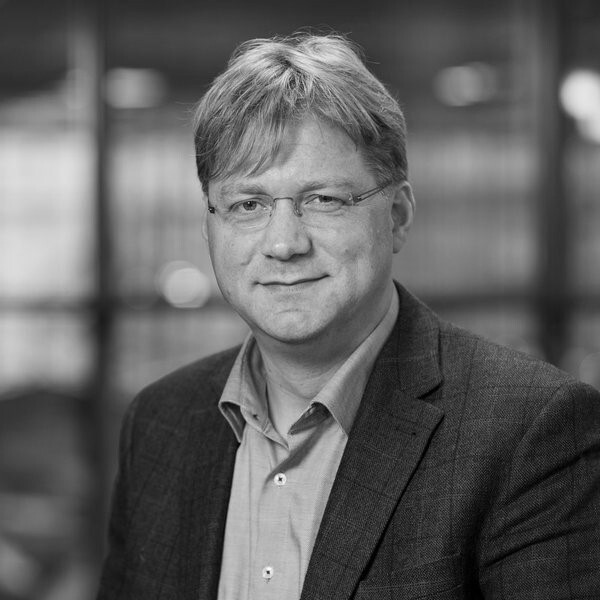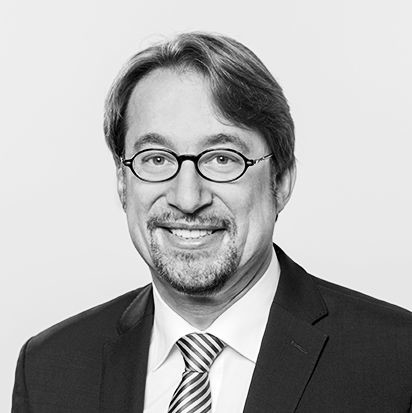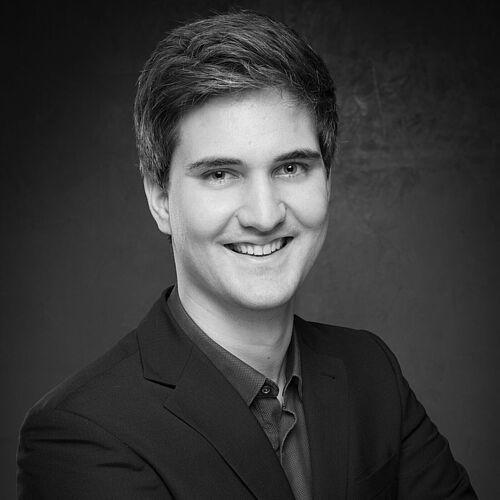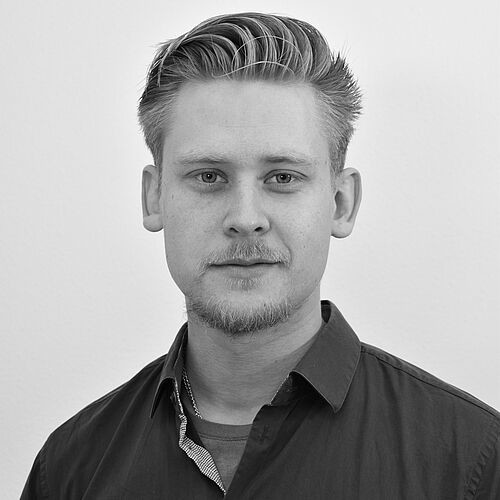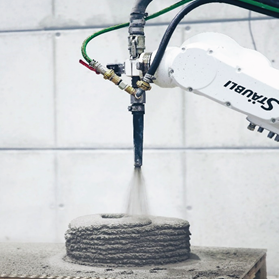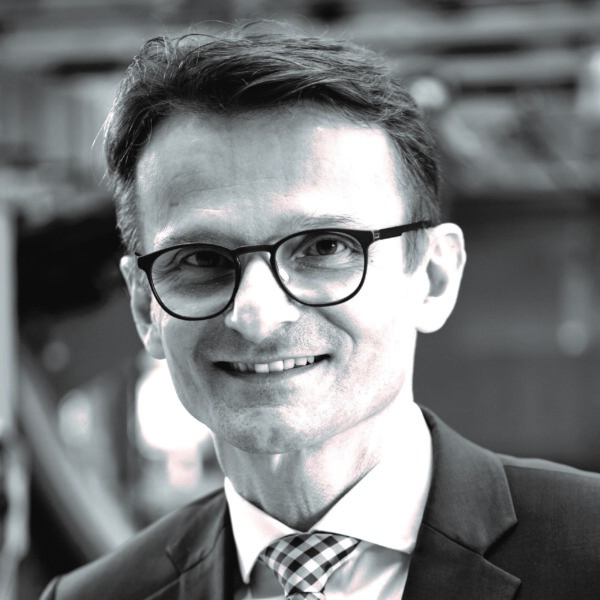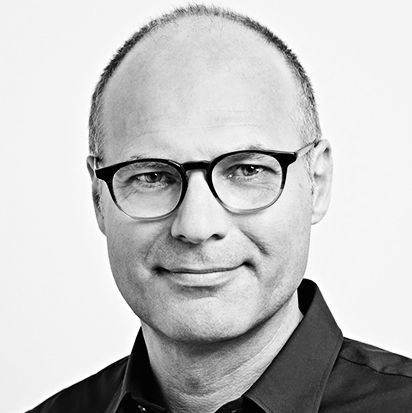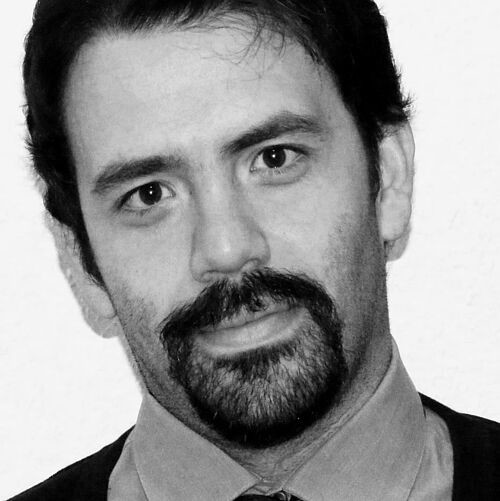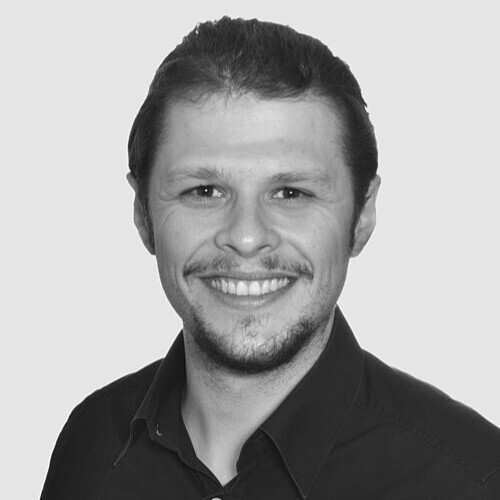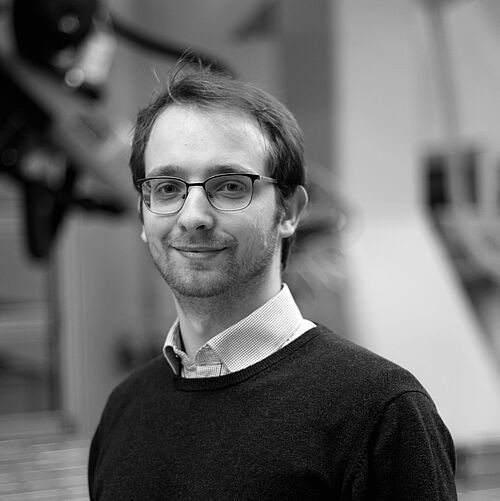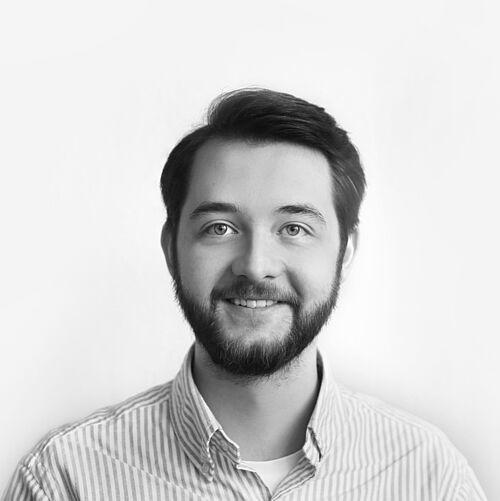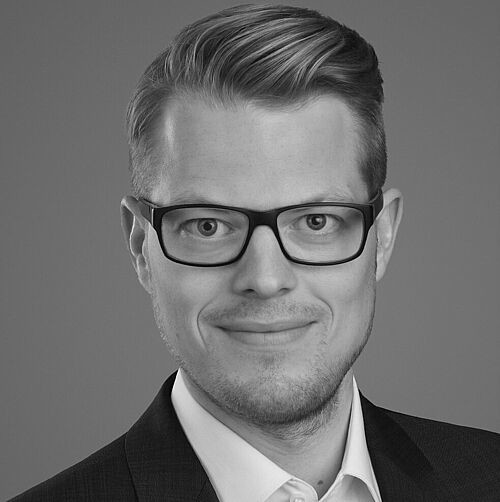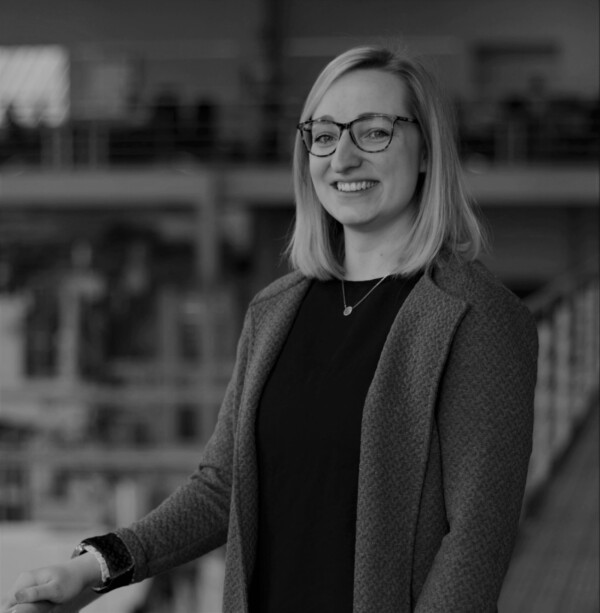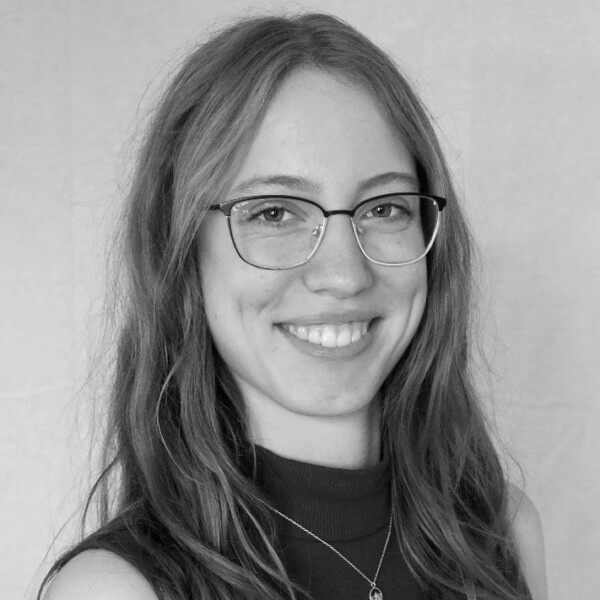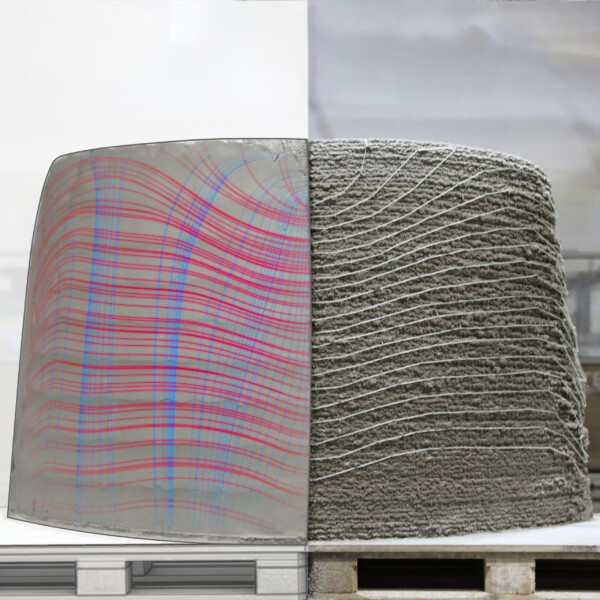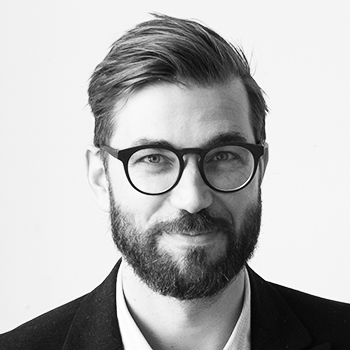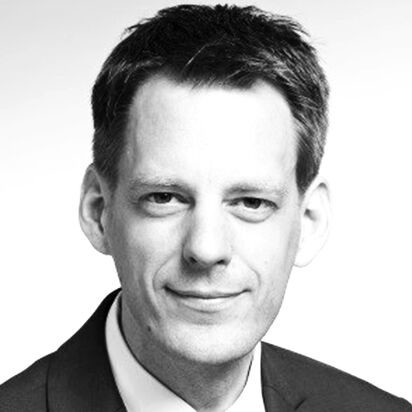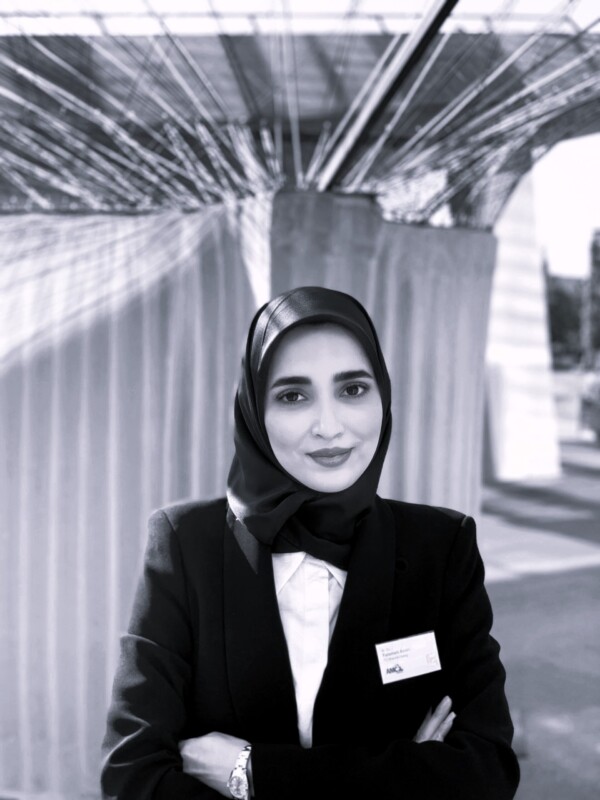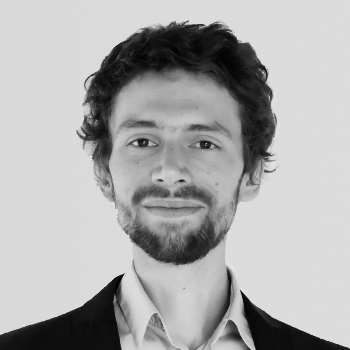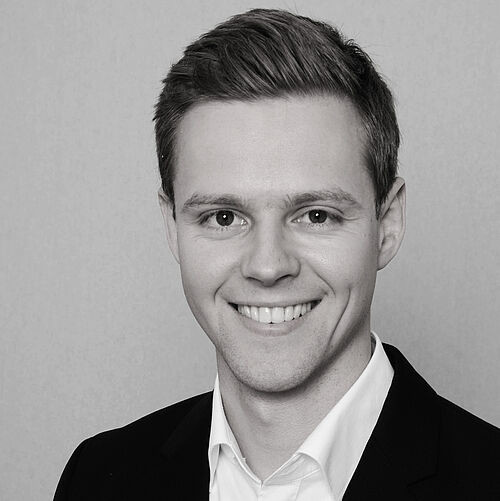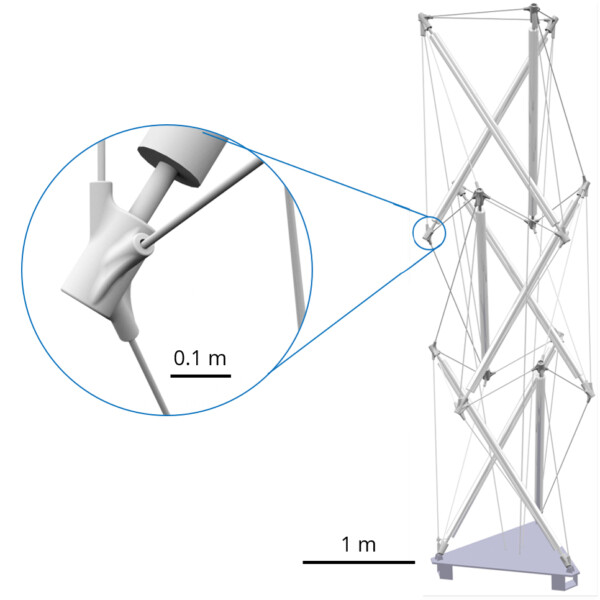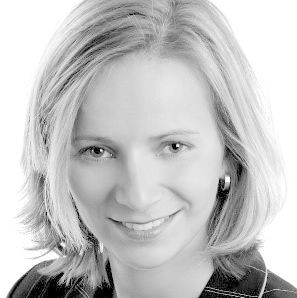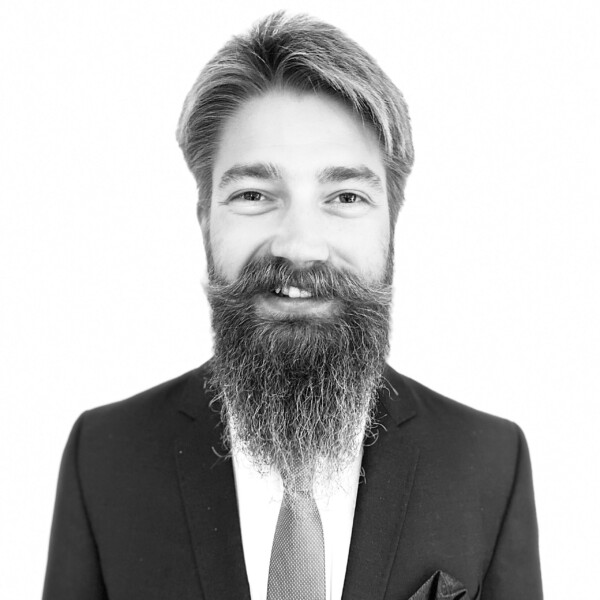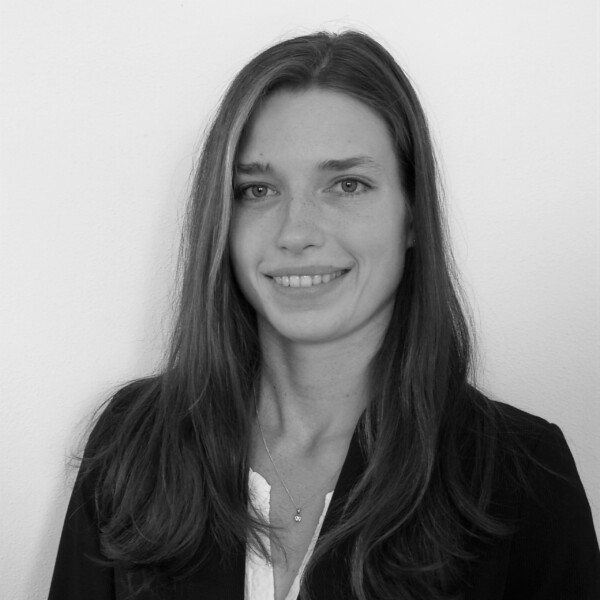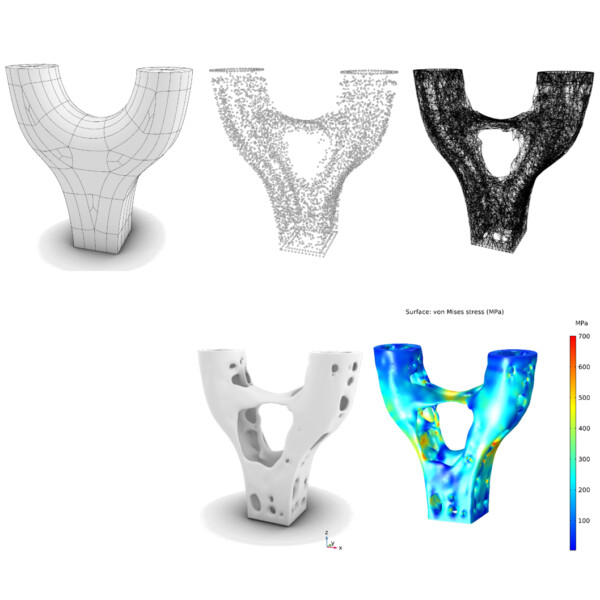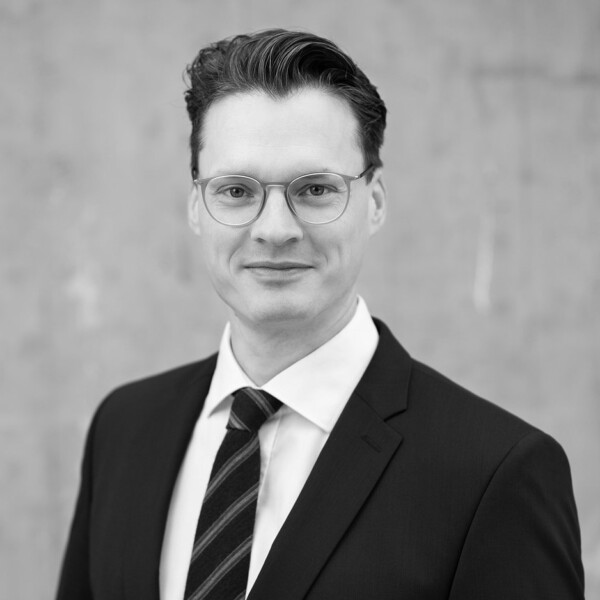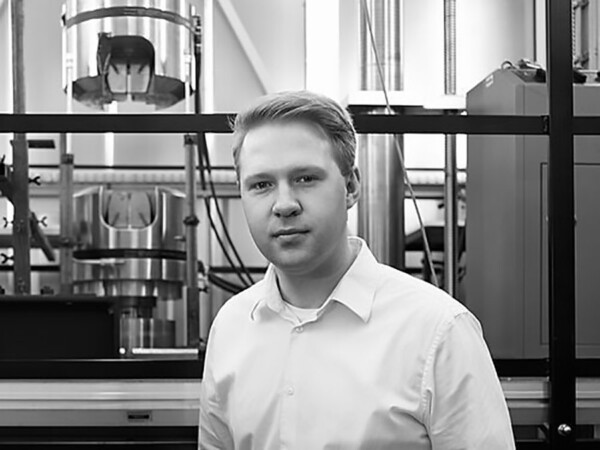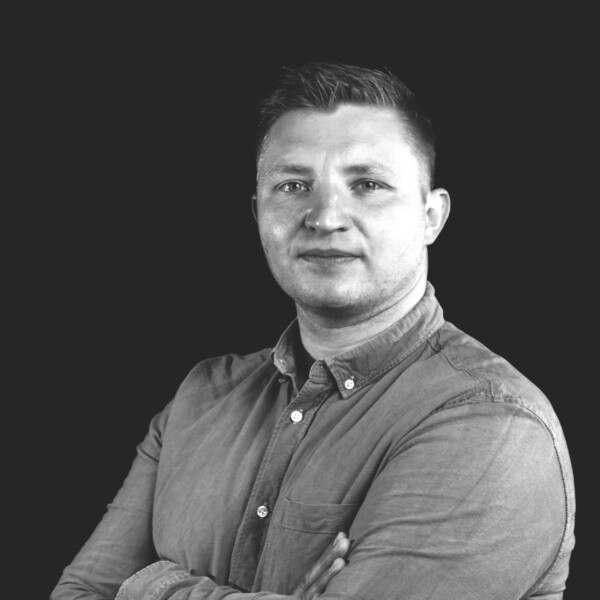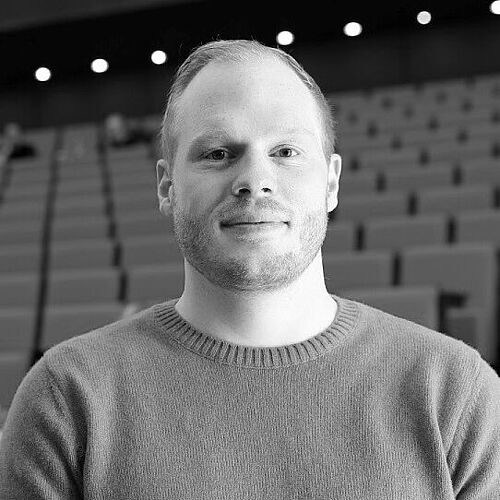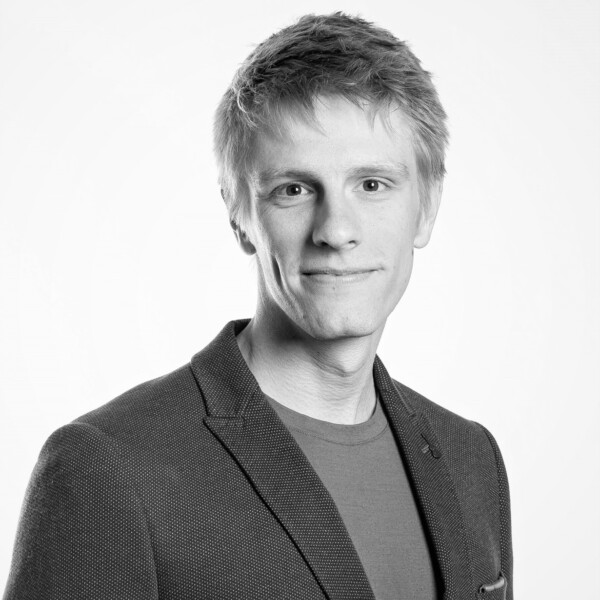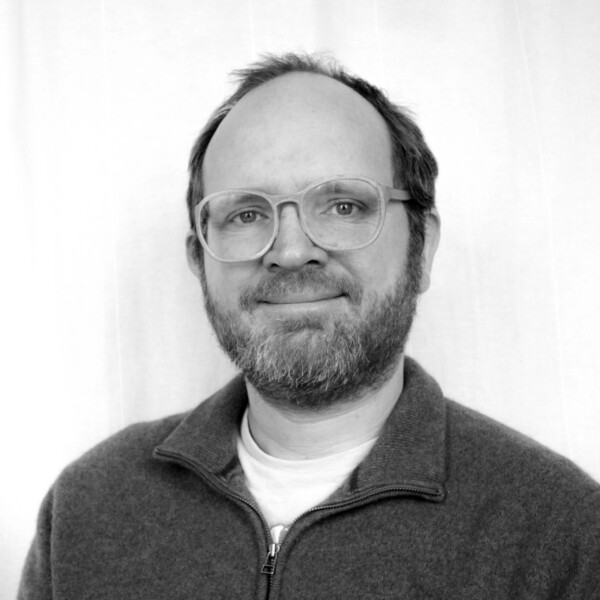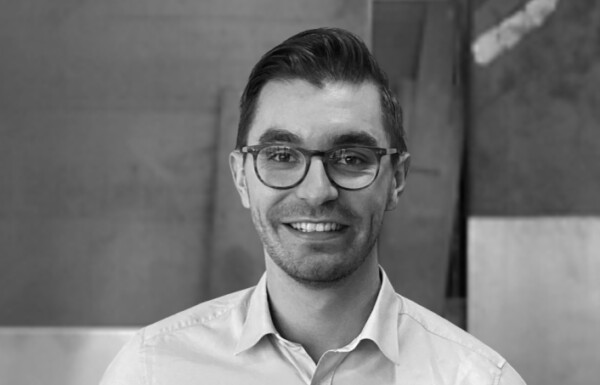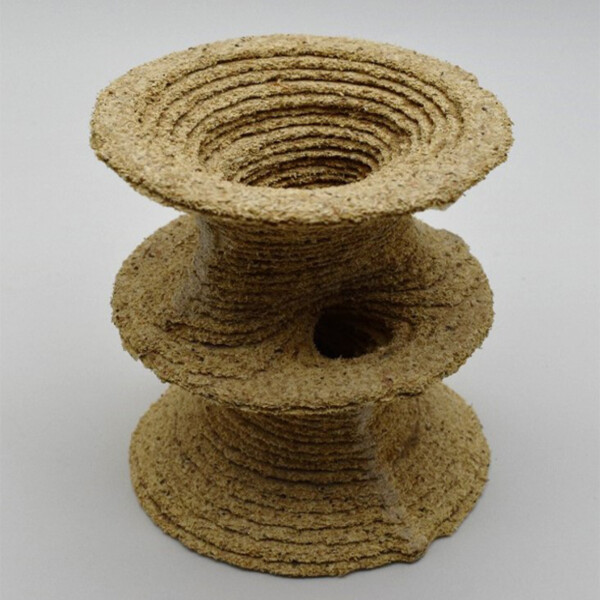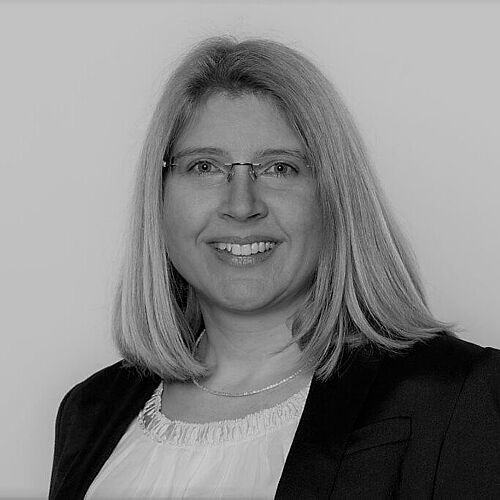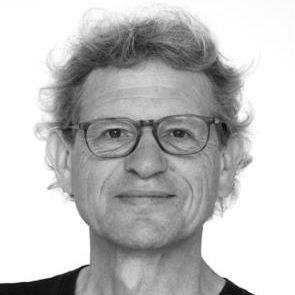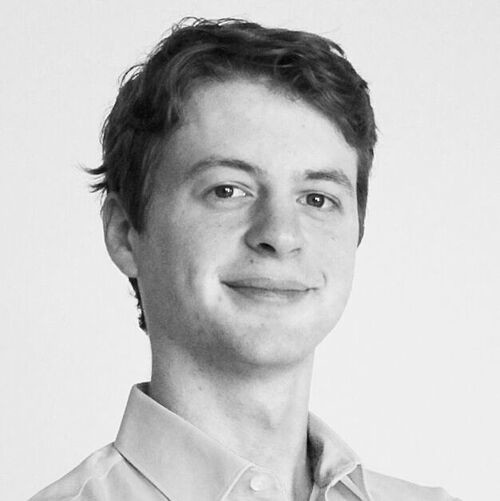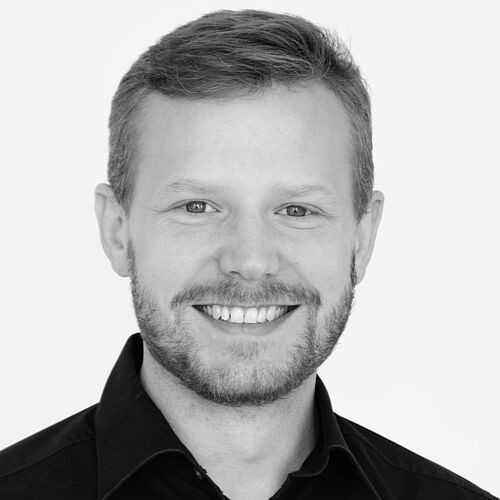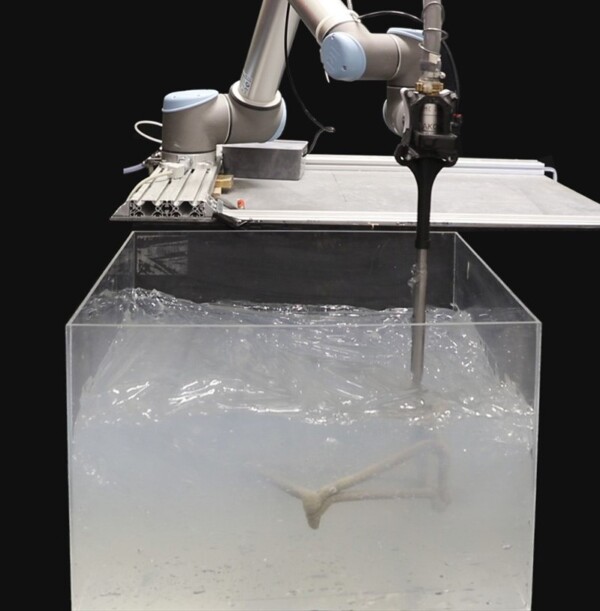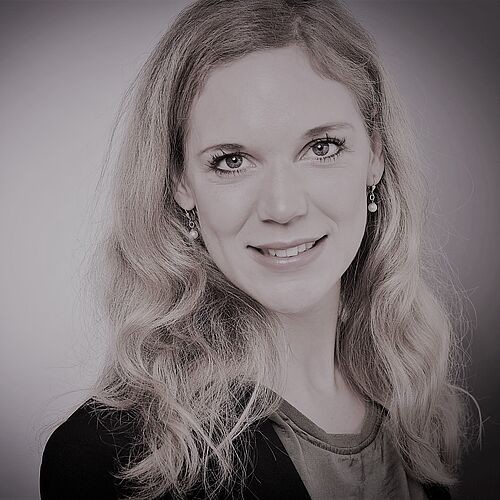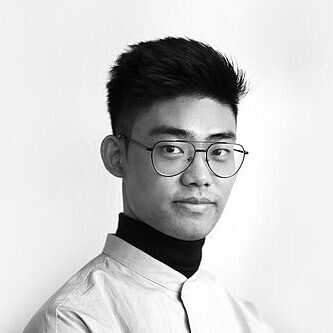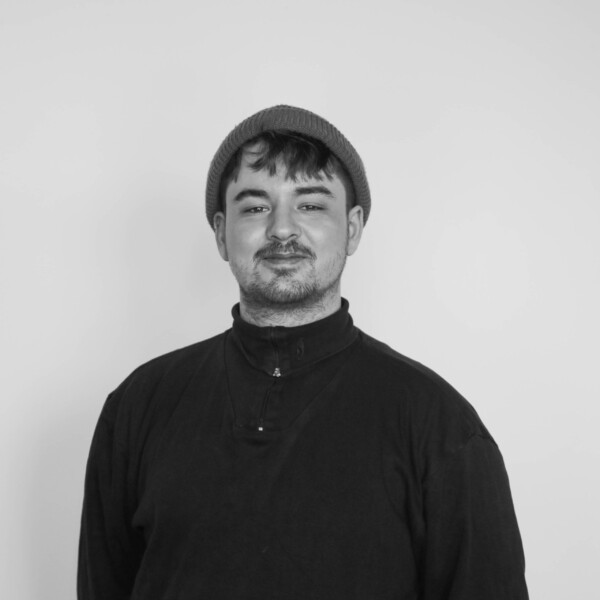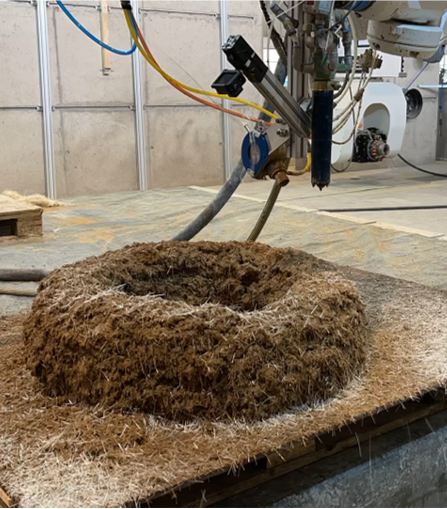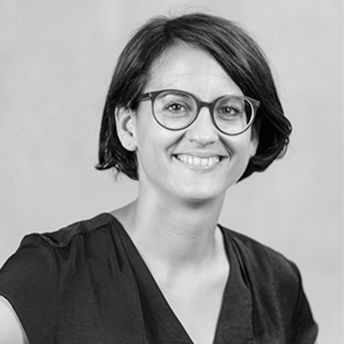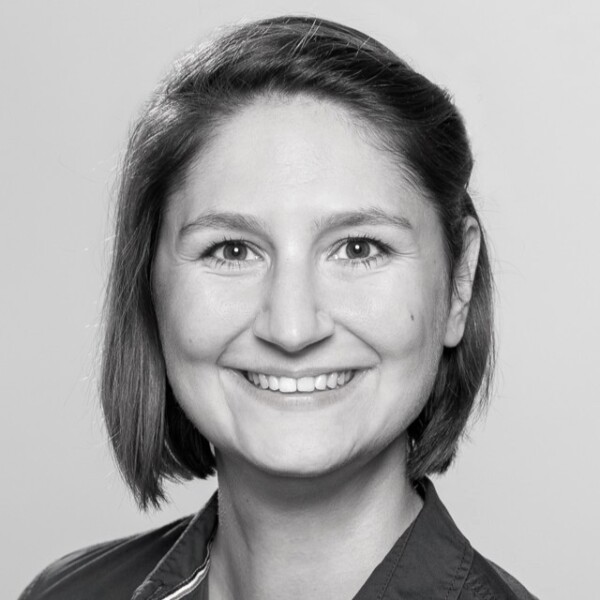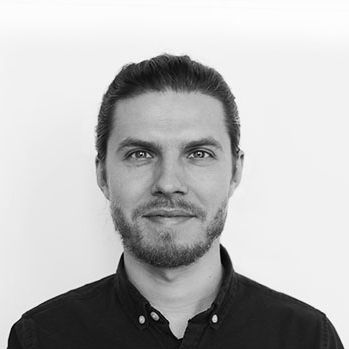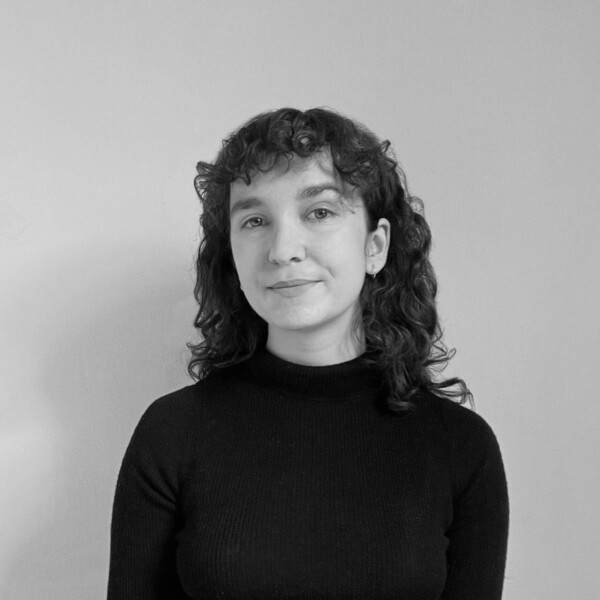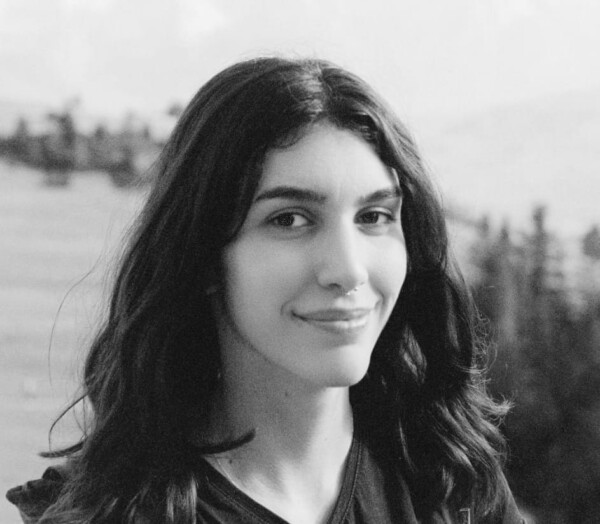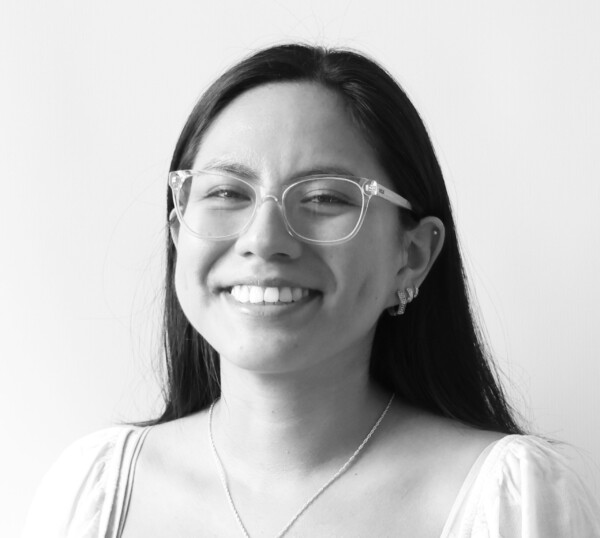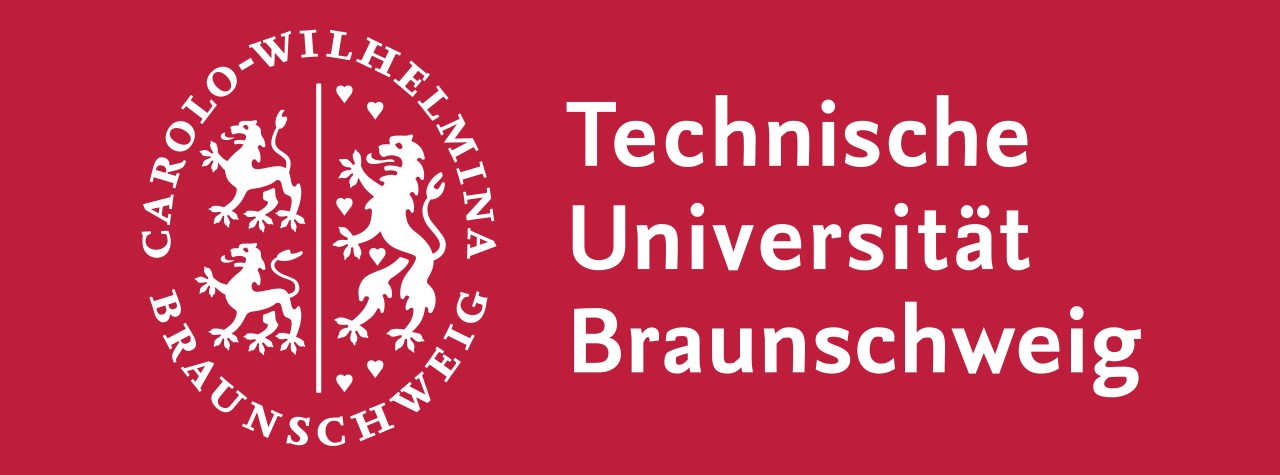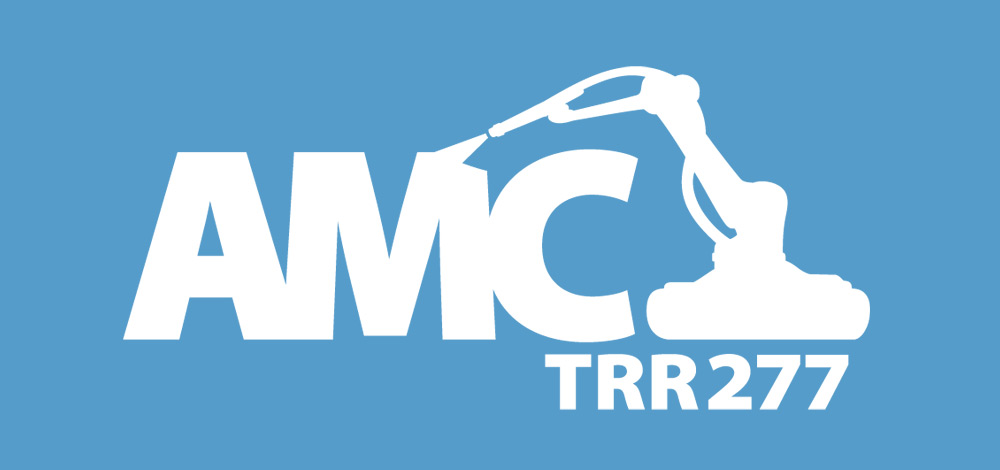Focus Area A
Focus Area A ‘Materials and Processes’ centres on the investigation of basic principles for the development from scratch of unique AMC processes for concrete, steel, and timber. As mentioned above, the innovation potential of the proposal is based primarily on the merging of material and process developments produced in interdisciplinary research teams.
Based on the state of research and the results of preliminary research projects carried out by the applicants, two groups of additive manufacturing technologies are considered promising for implementation in construction: (1) particle-bed 3D printing techniques and (2) deposition 3D printing techniques.
Particle-bed 3D printing techniques include selective cement activation (SCA) (A01) and selective paste intrusion (SPI) (A02) for concrete, as well as selective laser melting (SLM) (A06) for steel and individual layer fabrication (A08) for timber. Among the deposition techniques, extrusion 3D printing (A03) and shotcrete 3D printing (SC3DP) (A04) for concrete, as well as wire and arc additive manufacturing (WAAM) (A07) for steel are considered.
Approach Visuals Figure 2: 3D printing of prismatic specimens for bending tensile and compressive strength / Credit: Dreßler, iBMB TU Braunschweig Figure 3: De-powdering of a printed column / Credit:…
Kwade, Arno Prof. Dr.-Ing.
Head of the institute for particle technology. Head of iPAT and supports the academic staff regarding the conditioning of particle products.
Project(s)
Particle-Bed 3D Printing by Selective Cement Activation (SCA) – Sustainability, process enhancement and material models
Particle-Bed 3D Printing by Selective Cement Paste Intrusion (SPI) – Particle Surface Functionalisation, Particle Synthesis and Integration of WAAM Reinforcement
Lowke, Dirk Prof. Dr.-Ing.
is head of the institute of building materials, concrete construction and fire protection, division of building materials. He will advise the scientific staff executing their work under consideration of the formulated project aims. He is responsible for the coordination and quality control of all work of iBMB.
Project(s)
Particle-Bed 3D Printing by Selective Cement Activation (SCA) – Sustainability, process enhancement and material models
Integrated Additive Manufacturing Processes for Reinforced Shotcrete 3D Printing (SC3DP) Elements with Precise Surface Quality
Dorresteijn, Evelien M. Sc.
is a researcher at Institute of Building Materials, Concrete Construction and Fire Safety and works for the project A01.
Project(s)
Particle-Bed 3D Printing by Selective Cement Activation (SCA) – Sustainability, process enhancement and material models
Herding, Friedrich M. Sc.
M. Sc. Friedrich Herding is a research associate in the working group of Prof. Dr.-Ing. Dirk Lowke. He is researching the material-process interaction in the SCA process.
Project(s)
Particle-Bed 3D Printing by Selective Cement Activation (SCA) – Sustainability, process enhancement and material models
Meier, Niklas M. Sc.
is a research associate in the work group of Prof. Dr.-Ing. Arno Kwade. He is responsible for the development of tailored particles for the SCA process.
Project(s)
Particle-Bed 3D Printing by Selective Cement Activation (SCA) – Sustainability, process enhancement and material models
Zetzener, Harald Dr.-Ing.
deputy director of the institute for particle technology, head of Division Powder and Slurry Processes, supports Prof. Kwade in leading the project.
Project(s)
Particle-Bed 3D Printing by Selective Cement Activation (SCA) – Sustainability, process enhancement and material models
Particle-Bed 3D Printing by Selective Cement Paste Intrusion (SPI) – Particle Surface Functionalisation, Particle Synthesis and Integration of WAAM Reinforcement
Figure 1: Production cycle of SPI with WAAM reinforcement: I) application of the WAAM reinforcement, II) spreading of the next aggregate layer, III) intrusion of the cement paste in the target layer,…
Gehlen, Christoph Prof. Dr.-Ing.
Dean of TUM School of Engineering and Design, Head of cbm and leads project A02 and A03. He instructs and advises the academic staff regarding additive manufacturing and concrete technological questions. He is responsible for the coordination and quality control of all work of cbm. Untill Oct. 2021 he was the co-spokesperson of the TRR 277. He then became Dean of TUM School of Engineering and Design and handed over the tasks of Co-Speaker to Kathrin Dörfler.
Project(s)
Particle-Bed 3D Printing by Selective Cement Paste Intrusion (SPI) – Particle Surface Functionalisation, Particle Synthesis and Integration of WAAM Reinforcement
Extrusion of Near-Nozzle Mixed Concrete –Individually Graded in Density and in Rate of 3D Fibre Reinforcement
Kwade, Arno Prof. Dr.-Ing.
Head of the institute for particle technology. Head of iPAT and supports the academic staff regarding the conditioning of particle products.
Project(s)
Particle-Bed 3D Printing by Selective Cement Activation (SCA) – Sustainability, process enhancement and material models
Particle-Bed 3D Printing by Selective Cement Paste Intrusion (SPI) – Particle Surface Functionalisation, Particle Synthesis and Integration of WAAM Reinforcement
Zäh, Michael F. Prof. Dr.-Ing.
guides the scientific staff in the execution of the LPBF experiments.He provides guidance in methods for analysing the main mechanisms of action and the correlation of the results for the whole process chain. Head of iwb and supports the academic staff regarding additive manufacturing, alignment and execution of numerical heat transport simulations, questions during validation and process development.
Project(s)
Particle-Bed 3D Printing by Selective Cement Paste Intrusion (SPI) – Particle Surface Functionalisation, Particle Synthesis and Integration of WAAM Reinforcement
Laser Powder-Bed Fusion (LPBF) of Steel Elements for Construction – Basics of Design and Mechanical Resilience.
Bähr, Siegfried M. Sc.
Siegfried Baehr is head of the department Additive Manufacturing at the iwb and assists Prof. Zaeh in leading the projects A02 and A06. He is instructing and supporting the academic staff regarding LPBF and WAAM.
Project(s)
Particle-Bed 3D Printing by Selective Cement Paste Intrusion (SPI) – Particle Surface Functionalisation, Particle Synthesis and Integration of WAAM Reinforcement
Laser Powder-Bed Fusion (LPBF) of Steel Elements for Construction – Basics of Design and Mechanical Resilience.
Hamilton, Leigh Duncan M. Sc.
is a research associate in the work group of Prof. Dr.-Ing. Arno Kwade. He is responsible for the development of tailored particles for the combined process of SPI and WAAM.
Project(s)
Particle-Bed 3D Printing by Selective Cement Paste Intrusion (SPI) – Particle Surface Functionalisation, Particle Synthesis and Integration of WAAM Reinforcement
Kränkel, Thomas Dr.-Ing.
Head of workgroup concrete technology and assists Prof. Gehlen in leading project A02. He instructs and supports the academic staff regarding additive manufacturing and concrete technological questions.
Project(s)
Particle-Bed 3D Printing by Selective Cement Paste Intrusion (SPI) – Particle Surface Functionalisation, Particle Synthesis and Integration of WAAM Reinforcement
Extrusion of Near-Nozzle Mixed Concrete –Individually Graded in Density and in Rate of 3D Fibre Reinforcement
Riegger, Felix M. Sc.
is a research associate in the workgroup of Prof. Dr.-Ing. Michael F. Zäh. As an expert in WAAM, he is responsible for the simulation and temperature modelling of the process.
Project(s)
Particle-Bed 3D Printing by Selective Cement Paste Intrusion (SPI) – Particle Surface Functionalisation, Particle Synthesis and Integration of WAAM Reinforcement
Straßer, Alexander M. Sc.
is a research associate at the Workinggroup of Prof. Dr.-Ing. Christoph Gehlen. Responsible for research on selective paste intrusion and development of cement pastes.
Project(s)
Particle-Bed 3D Printing by Selective Cement Paste Intrusion (SPI) – Particle Surface Functionalisation, Particle Synthesis and Integration of WAAM Reinforcement
Zetzener, Harald Dr.-Ing.
deputy director of the institute for particle technology, head of Division Powder and Slurry Processes, supports Prof. Kwade in leading the project.
Project(s)
Particle-Bed 3D Printing by Selective Cement Activation (SCA) – Sustainability, process enhancement and material models
Particle-Bed 3D Printing by Selective Cement Paste Intrusion (SPI) – Particle Surface Functionalisation, Particle Synthesis and Integration of WAAM Reinforcement
Networking with other projects Poster TRR277_A03_230601_TP_Poster_FP1 TRR277_A03_230601_TP_Poster_FP2 Extrusion of Near-Nozzle Mixed Concrete –Individually Graded in Density and in Rate of 3D Fibre Re…
Bos, Freek PhD M.Sc.
Team Leader for Extrusion-Based Additive Manufacturing of Concrete at the TUM School of Engineering and Design
Project(s)
Extrusion of Near-Nozzle Mixed Concrete –Individually Graded in Density and in Rate of 3D Fibre Reinforcement
Fottner, Johannes Prof. Dr.-Ing.
Project leader in A03 and B02. He instructs and supports the academic staff regarding bulk conveying and machine design questions.
Project(s)
Extrusion of Near-Nozzle Mixed Concrete –Individually Graded in Density and in Rate of 3D Fibre Reinforcement
Gehlen, Christoph Prof. Dr.-Ing.
Dean of TUM School of Engineering and Design, Head of cbm and leads project A02 and A03. He instructs and advises the academic staff regarding additive manufacturing and concrete technological questions. He is responsible for the coordination and quality control of all work of cbm. Untill Oct. 2021 he was the co-spokesperson of the TRR 277. He then became Dean of TUM School of Engineering and Design and handed over the tasks of Co-Speaker to Kathrin Dörfler.
Project(s)
Particle-Bed 3D Printing by Selective Cement Paste Intrusion (SPI) – Particle Surface Functionalisation, Particle Synthesis and Integration of WAAM Reinforcement
Extrusion of Near-Nozzle Mixed Concrete –Individually Graded in Density and in Rate of 3D Fibre Reinforcement
Dahlenburg, Maximilian M. Sc.
is an expert in mechanical engineering, specialized in development, CAD-Design and construction of complex machines at the Chair of Materials Handling, Material Flow, Logistics within TUM. He is responsible for design, construction, automation, simulation and optimization of the near-nozzle continuous mixing system developed in A03. Furthermore he is responsible for the material supply and the mat…
Project(s)
Extrusion of Near-Nozzle Mixed Concrete –Individually Graded in Density and in Rate of 3D Fibre Reinforcement
Hechtl, Maximilian M. Sc.
is a research associate at the Working group of Prof. Dr.-Ing. Christoph Gehlen. Expert in material development of Extrusion Concrete for additive manufacturing.
Project(s)
Extrusion of Near-Nozzle Mixed Concrete –Individually Graded in Density and in Rate of 3D Fibre Reinforcement
Kränkel, Thomas Dr.-Ing.
Head of workgroup concrete technology and assists Prof. Gehlen in leading project A02. He instructs and supports the academic staff regarding additive manufacturing and concrete technological questions.
Project(s)
Particle-Bed 3D Printing by Selective Cement Paste Intrusion (SPI) – Particle Surface Functionalisation, Particle Synthesis and Integration of WAAM Reinforcement
Extrusion of Near-Nozzle Mixed Concrete –Individually Graded in Density and in Rate of 3D Fibre Reinforcement
Networking with other projects Poster TRR277_A04_Poster_1-DFG-Begutachtung TRR277_A04_Poster_2-DFG-Begutachtung Integrated Additive Manufacturing Processes for Reinforced Shotcrete 3D Printing (SC3DP)…
Dröder, Klaus Prof. Dr.-Ing.
advises the scientific staff in continuous consideration of the defined research objectives and investigates opportunities to generate novel research projects and publications. He is responsible for the content and organisational coordination of all work on the part of IWF.
Project(s)
Integrated Additive Manufacturing Processes for Reinforced Shotcrete 3D Printing (SC3DP) Elements with Precise Surface Quality
Kloft, Harald Prof. Dr.-Ing.
leads the scientific staff in the orientation and execution of the design process creation and supports them in an advisory capacity in the creation of test geometries and demonstrators. He is responsible for the content and organisational coordination of all work on the part of ITE. He instructs the research engineer at ITE in the conceptual structure, execution and evaluation of the theoretical and experimental research work. He is the spokesperson of the TRR 277.
Project(s)
Integrated Additive Manufacturing Processes for Reinforced Shotcrete 3D Printing (SC3DP) Elements with Precise Surface Quality
Wire and Arc Additive Manufacturing (WAAM) of Complex Individualized Steel Components
Earth Additive Manufacturing (EAM) – Material and Process Combinations for AM with Earth-based Materials
Jointing Principles for Combination of Concrete Elements Produced by Different Additive Manufacturing Processes
Central Tasks of the AMC
Lowke, Dirk Prof. Dr.-Ing.
is head of the institute of building materials, concrete construction and fire protection, division of building materials. He will advise the scientific staff executing their work under consideration of the formulated project aims. He is responsible for the coordination and quality control of all work of iBMB.
Project(s)
Particle-Bed 3D Printing by Selective Cement Activation (SCA) – Sustainability, process enhancement and material models
Integrated Additive Manufacturing Processes for Reinforced Shotcrete 3D Printing (SC3DP) Elements with Precise Surface Quality
Baghdadi, Abtin Dr.-Ing.
is a research associate at Institute of Structural Design (ITE) of TU Braunschweig. He is responsible for experimental, theoretical and numerical research work as well as for the coordination of the cooperations within the SFB.
Project(s)
Integrated Additive Manufacturing Processes for Reinforced Shotcrete 3D Printing (SC3DP) Elements with Precise Surface Quality
Jointing Principles for Combination of Concrete Elements Produced by Different Additive Manufacturing Processes
Böhler, David M. Sc.
Project(s) Project A 04 Integrated Additive Manufacturing Processes for Reinforced Shotcrete 3D Printing (SC3DP) Elements with Precise Surface Quality
Project(s)
Integrated Additive Manufacturing Processes for Reinforced Shotcrete 3D Printing (SC3DP) Elements with Precise Surface Quality
David, Martin M. Sc.
is a doctoral researcher at the Institute for Machine Tools and Production Technology (IWF) at TU Braunschweig. He is working on the development of different end effectors for an automated concrete reinforcement as well as the surface processing of printed SC3DP elements. Additionally he is developing different nozzle geometries for the SC3DP process. Moreover, he will frequently publish the resul…
Project(s)
Integrated Additive Manufacturing Processes for Reinforced Shotcrete 3D Printing (SC3DP) Elements with Precise Surface Quality
Dörrie, Robin M. Sc.
is a doctoral researcher for the duration of the research project. He is leading the A04 project and organising the development of new concepts and strategies for the integration of reinforcement in SC3DP elements. Furthermore he is investigating the SC3DP process, its limitations and the spatial effect for the application in architecture and design within the work group of Prof. Dr.-Ing. Harald K…
Project(s)
Integrated Additive Manufacturing Processes for Reinforced Shotcrete 3D Printing (SC3DP) Elements with Precise Surface Quality
Freund, Niklas M. Sc.
is a doctoral researcher for the duration of the research project. He will lead and organise the material development and testing program as well as the data evaluation and material modelling work within WG Lowke. Moreover, he will frequently publish the results achieved within the community.
Project(s)
Integrated Additive Manufacturing Processes for Reinforced Shotcrete 3D Printing (SC3DP) Elements with Precise Surface Quality
Opolka, Anna Marie M. Sc.
is a doctoral researcher at the Institute for Machine Tools and Production Technology (IWF) at TU Braunschweig. She is specialized in robotic manufacturing processes, especially for additive manufacturing and supports the development for the processing of printed SC3DP elements within project A04.
Project(s)
Integrated Additive Manufacturing Processes for Reinforced Shotcrete 3D Printing (SC3DP) Elements with Precise Surface Quality
Rudolph, Jennifer
is a researcher at project A04.
Project(s)
Integrated Additive Manufacturing Processes for Reinforced Shotcrete 3D Printing (SC3DP) Elements with Precise Surface Quality
Half-covered real-scale case study for the combination of Core Winding Reinforcement and Shotcrete 3D Printing. The reinforcement layout was derived from principle stress analysis (overlay on the left…
Hack, Norman Dipl.-Ing. M.A. AA
is supervising ITE`s requested doctoral researcher during all phases of the research. Additionally, he is actively involved in the conceptual phase, developing reinforcement concepts for the different AM methods.
Project(s)
Integration of Individualized Prefabricated Fibre Reinforcement in Additive Manufacturing with Concrete
Injection 3D Concrete Printing (I3DCP) – Material Efficient Lightweight Reinforced Concrete Structures Based on Spatially Complex Strut-and-Tie-Models
Integration of Additive Manufacturing in the Construction Process
Hühne, Christian Prof. Dr.-Ing.
leads the iAF scientific staff in the development and construction of the winding head, the manufacturing process of the reinforcement from FRP with different curing resins, and in questions of the damage of the FRP by the shotcreting process.
Project(s)
Integration of Individualized Prefabricated Fibre Reinforcement in Additive Manufacturing with Concrete
Amiri, Fatemeh M. Sc.
Her focus centers on the exploration of innovative fiber reinforcement strategies, reflecting her role as a dedicated doctoral researcher.
Project(s)
Integration of Individualized Prefabricated Fibre Reinforcement in Additive Manufacturing with Concrete
Gantner, Stefan M. Sc.
investigates fibre reinforcement strategies as doctoral researcher. In collaboration with project partners he develops techniques for processing fibres to obtain suitable reinforcement structures for different AM methods. Beyond conception his work scope ranges from deriving representative part designs to physical testing including prototyping of toolings.
Project(s)
Integration of Individualized Prefabricated Fibre Reinforcement in Additive Manufacturing with Concrete
Rothe, Tom M. Sc.
is investigating the usability of prefabricated fibre reinforcement produced in a robotic winding process for different AM methods. He’s developing an automated production process of the fibre reinforcement for the special needs of the project. This includes the investigation of the most suitable reinforcement geometry, the build-up of a dynamic winding machine and the integration of it into a rob…
Project(s)
Integration of Individualized Prefabricated Fibre Reinforcement in Additive Manufacturing with Concrete
Shape-optimized tensegrity node manufactured by PBF-LB/M (vibratory ground and polished) Shape-optimized tensegrity node manufactured by PBF-LB/M (as-built with support structure) Typical microstructu…
Radlbeck, Christina Dr.-Ing.
leads scientific teams for AM, fatigue and fracture and aluminium at MB and is responsible for the MB Laboratory. She supervises experiments and provides assistance in analysis and interpre- tation of results
Project(s)
Laser Powder-Bed Fusion (LPBF) of Steel Elements for Construction – Basics of Design and Mechanical Resilience.
Zäh, Michael F. Prof. Dr.-Ing.
guides the scientific staff in the execution of the LPBF experiments.He provides guidance in methods for analysing the main mechanisms of action and the correlation of the results for the whole process chain. Head of iwb and supports the academic staff regarding additive manufacturing, alignment and execution of numerical heat transport simulations, questions during validation and process development.
Project(s)
Particle-Bed 3D Printing by Selective Cement Paste Intrusion (SPI) – Particle Surface Functionalisation, Particle Synthesis and Integration of WAAM Reinforcement
Laser Powder-Bed Fusion (LPBF) of Steel Elements for Construction – Basics of Design and Mechanical Resilience.
Bähr, Siegfried M. Sc.
Siegfried Baehr is head of the department Additive Manufacturing at the iwb and assists Prof. Zaeh in leading the projects A02 and A06. He is instructing and supporting the academic staff regarding LPBF and WAAM.
Project(s)
Particle-Bed 3D Printing by Selective Cement Paste Intrusion (SPI) – Particle Surface Functionalisation, Particle Synthesis and Integration of WAAM Reinforcement
Laser Powder-Bed Fusion (LPBF) of Steel Elements for Construction – Basics of Design and Mechanical Resilience.
Blankenhagen, Jakob M. Sc.
is a doctoral researcher: Conducts scientific studies for the duration of the research project. Performs mechanical testing, fatigue testing, fracture mechanics testing, metallurgical analysis, and investigates the influence of geometry on structural performance. Analyzes all data and prepares reports, presentations, and publications.
Project(s)
Laser Powder-Bed Fusion (LPBF) of Steel Elements for Construction – Basics of Design and Mechanical Resilience.
Siebert, Dorina M. Sc.
Doctoral researcher: carrying out scientific studies. She will play a decisive role in planning and conducting fatigue and fracture testing. The evaluation and interpretation of test results is also one of her tasks. Finally she undertakes statistical considerations, which are intended to serve as a basis for the development of design guidelines.”
Project(s)
Laser Powder-Bed Fusion (LPBF) of Steel Elements for Construction – Basics of Design and Mechanical Resilience.
Wenzler, David L. M. Sc.
Doctoral researcher: for the duration of the research project carrying out the scientific studies. He will execute the LPBF experiments, the thermographic imaging of the LPBF process, data analysis, methods for correlations and listing of guidelines for AM elements.
Project(s)
Laser Powder-Bed Fusion (LPBF) of Steel Elements for Construction – Basics of Design and Mechanical Resilience.
Node with minimum wall thickness and restricted overhang as constraints for topology optimisation using self-organising systems Anchorage structure produced by WAAM Thin-walled structure with one-side…
Hensel, Jonas Uni.-Prof. Dr.-Ing.
is Professor for Welding Engineering at Chemnitz University of Technology and takes responsibility for the management of this project in terms of content and organisation as well as the cooperation with project partners within the TRR 277. Furthermore, he supervises the research assistant of WG Hensel for welding experiments, metallographic characterisation, numerical analysis and residual stress determination.
Project(s)
Wire and Arc Additive Manufacturing (WAAM) of Complex Individualized Steel Components
Kloft, Harald Prof. Dr.-Ing.
leads the scientific staff in the orientation and execution of the design process creation and supports them in an advisory capacity in the creation of test geometries and demonstrators. He is responsible for the content and organisational coordination of all work on the part of ITE. He instructs the research engineer at ITE in the conceptual structure, execution and evaluation of the theoretical and experimental research work. He is the spokesperson of the TRR 277.
Project(s)
Integrated Additive Manufacturing Processes for Reinforced Shotcrete 3D Printing (SC3DP) Elements with Precise Surface Quality
Wire and Arc Additive Manufacturing (WAAM) of Complex Individualized Steel Components
Earth Additive Manufacturing (EAM) – Material and Process Combinations for AM with Earth-based Materials
Jointing Principles for Combination of Concrete Elements Produced by Different Additive Manufacturing Processes
Central Tasks of the AMC
Unglaub, Julian Dr.-Ing.
is head of division Material behavior at IS and takes responsibility for management of this project in terms of content and organization. He supervises the research assistants of WG Thiele for novel material and component testing methods based on MultiCam Digital Image Correlation (DIC) and the development of complex material models to describe WAAM-component behavior.
Project(s)
Wire and Arc Additive Manufacturing (WAAM) of Complex Individualized Steel Components
Höfer, Kevin Dr.
Kevin Hoefer works as a post-doc at the Chair of Welding Technology and is responsible for the department “Materials and Design”. In the project, he supports Prof. Jonas Hensel in the administration and management of A07, in particular in the areas of welding experiments, metallographic characterisation and residual stress determination.
Project(s)
Wire and Arc Additive Manufacturing (WAAM) of Complex Individualized Steel Components
Jahns, Hendrik M. Sc.
doctoral researcher at IS. He is responsible for the planning and execution of all scientific work, both numerical and experimental, in the framework of WAAM. This includes material and component testing, material modeling, analysis all data, prepares reports, presentations and publications.
Project(s)
Wire and Arc Additive Manufacturing (WAAM) of Complex Individualized Steel Components
Jurke, Florian M. Sc.
is a research associate at the Chair of Welding Engineering at Chemnitz University of Technology. His focus is process analysis of arc-processes. He is particularly concerned with sensor integration and anomaly detection in arc-welding processes and additive manufacturing with wire and arc (DED-Arc).
Project(s)
Wire and Arc Additive Manufacturing (WAAM) of Complex Individualized Steel Components
Ledderose, Lukas M. Sc.
is a postdoctoral researcher at the ITE. He is responsible for design strategies and possible applications. This includes the development of new structures, semi-finished parts and the concept for on-site WAAM as well as life cycle analysis and the creation of Digital Twins. He also prepares reports, presentations and publications.
Project(s)
Wire and Arc Additive Manufacturing (WAAM) of Complex Individualized Steel Components
Müggenburg, Marc M. Sc.
doctoral researcher at IS. He is responsible for the planning and execution of all scientific work, both numerical and experimental, in the framework of WAAM. This includes material and component testing, material modeling, analysis of all data, preparation of reports, presentations and publications.
Project(s)
Wire and Arc Additive Manufacturing (WAAM) of Complex Individualized Steel Components
Networking with other projects Poster TRR277_A08_Poster_1-DFG-Begutachtung Structural Timber by Individual Layer Fabrication (ILF) In project A08 a novel fabrication process named ‘individual layer fa…
Bunzel, Frauke Dr. rer. nat.
has been working in the field of wood adhesives for many years. She gives guidance and support to the academic staff at WKI regarding the entire adhesive systems including adhesives, particles and pressing parameters.
Henke, Klaudius Dr.-Ing.
has been working on additive manufacturing in construction for many years. This work also includes additive manufacturing with wood. He leads the project A08 and provides general guidance and support for the academic staff at HBB. In addition, he is responsible for the coordination of the proposed project within the TRR 277. He was a member of the AMC Board for the first funding period 2020-2023.
Aßhoff, Carsten M. Sc.
is research associate at Fraunhofer Institute for Wood Research – Wilhelm-Klauditz-Institut WKI. In his doctoral research the focus is on the material development for additive manufacturing with wood.
Buschmann, Birger M. Sc.
is a mechanical engineer and doctoral researcher at TUM-HBB. For the project A08 he will work out the details of the fabrication process and is responsible for the topic of automatization. In C07 his responsibilities include the development of data acquisition concepts in order to identify relevant process parameters as well as the evaluation of generated data in order to form concepts for regulat…
Project(s)
Structural Timber by Individual Layer Fabrication (ILF)
Challenges of Additive Manufacturing – Technical Regulations and Qualification Requirements
Talke, Daniel M. Sc.
is a doctoral researcher and expert on additive manufacturing in construction. His previous work includes extrusion as well as selective binding processes of concrete. He will be responsible at TUM-HBB for all the collaborative work to be executed in conjunction with WKI in project A08, especially for WP 2.
Project(s)
Structural Timber by Individual Layer Fabrication (ILF)
Challenges of Additive Manufacturing – Technical Regulations and Qualification Requirements
Networking with other projects Poster TRR277_A09_230503_Poster FP2_Begutachtung_Vorlage-PRINTED Injection 3D Concrete Printing (I3DCP) – Material Efficient Lightweight Reinforced Concrete Structures B…
Hack, Norman Dipl.-Ing. M.A. AA
is supervising ITE`s requested doctoral researcher during all phases of the research. Additionally, he is actively involved in the conceptual phase, developing reinforcement concepts for the different AM methods.
Project(s)
Integration of Individualized Prefabricated Fibre Reinforcement in Additive Manufacturing with Concrete
Injection 3D Concrete Printing (I3DCP) – Material Efficient Lightweight Reinforced Concrete Structures Based on Spatially Complex Strut-and-Tie-Models
Integration of Additive Manufacturing in the Construction Process
Mai, Inka Dr.-Ing.
is Junior-Professor at the Institute of Civil Engineering, Department of Robotic Manufacturing of the Built Environment at Technische Universität Berlin.
Project(s)
Injection 3D Concrete Printing (I3DCP) – Material Efficient Lightweight Reinforced Concrete Structures Based on Spatially Complex Strut-and-Tie-Models
Xiao, Yinan M.Sc.
Is a doctoral researcher at the Institute of Structural Design (ITE) at TU Braunschweig.
Project(s)
Injection 3D Concrete Printing (I3DCP) – Material Efficient Lightweight Reinforced Concrete Structures Based on Spatially Complex Strut-and-Tie-Models
Zöllner, Jan-Phillip M. Sc.
Is a doctoral researcher at the Institute of Structural Design (ITE) at TU Braunschweig. He is working in project A09 developing strategies for Injection Printing. This includes robotic path planing, as well as strategies for reinforcement integration
Project(s)
Injection 3D Concrete Printing (I3DCP) – Material Efficient Lightweight Reinforced Concrete Structures Based on Spatially Complex Strut-and-Tie-Models
Networking with other projects Poster TRR277_A10_Poster_1-DFG-Begutachtung Earth Additive Manufacturing (EAM) – Material and Process Combinations for AM with Earth-based Materials In rec…
Dörfler, Kathrin Prof. Dr. sc. ETH
leads the scientific staff in the conception and execution of the research, and in questions of validation of the proposed methods. She is also responsible for the coordination of the cooperating research projects in the TRR 277. She is the Co-Spokesperson of the TRR 277. Dörfler supports Kloft as contact person for the DFG, in general public relation matters and also in representing the TRR 277 externally. Internally, Dörfler assists Kloft in the coordination between the research projects, as well as in the decisions on the financing of research tasks in the TRR 277.
Project(s)
Earth Additive Manufacturing (EAM) – Material and Process Combinations for AM with Earth-based Materials
Principles of Mobile Robotics for Additive Manufacturing in Construction
Learning, Sustainability, Design: Gender-equitable introduction of AMC to the public
Central Tasks of the AMC
Kloft, Harald Prof. Dr.-Ing.
leads the scientific staff in the orientation and execution of the design process creation and supports them in an advisory capacity in the creation of test geometries and demonstrators. He is responsible for the content and organisational coordination of all work on the part of ITE. He instructs the research engineer at ITE in the conceptual structure, execution and evaluation of the theoretical and experimental research work. He is the spokesperson of the TRR 277.
Project(s)
Integrated Additive Manufacturing Processes for Reinforced Shotcrete 3D Printing (SC3DP) Elements with Precise Surface Quality
Wire and Arc Additive Manufacturing (WAAM) of Complex Individualized Steel Components
Earth Additive Manufacturing (EAM) – Material and Process Combinations for AM with Earth-based Materials
Jointing Principles for Combination of Concrete Elements Produced by Different Additive Manufacturing Processes
Central Tasks of the AMC
Machner, Alisa Prof. Dr. (PhD)
is Professor at School of Engineering and Design, Department of Materials Engineering – Technical University of Munich. In her doctoral research the focus is on dolomite calcined clay composite cement.
Project(s)
Earth Additive Manufacturing (EAM) – Material and Process Combinations for AM with Earth-based Materials
Eichler, Hannes M. Sc.
is a structural engineer and doctoral researcher at the TUB Institute for Structural Design (ITE). He is responsible for Project A10 where he is researching on Sprayed Earth Additive Manufacturing (SEAM). This includes general investigations on earthen constructions as well as development of the SEAM process and the optimization of material-process interactions. Within the project, he will carry o…
Project(s)
Earth Additive Manufacturing (EAM) – Material and Process Combinations for AM with Earth-based Materials
Gosslar, Joschua M.Sc.
Project(s) Project A 10 Earth Additive Manufacturing (EAM) – Material and Process Combinations for AM with Earth-based Materials
Project(s)
Earth Additive Manufacturing (EAM) – Material and Process Combinations for AM with Earth-based Materials
Krakovska, Ema M. Sc.
is a researcher at the TT Professorship for Digital Fabrication within TUM. She received her architecture master’s degree at TUM in 2022, focusing on computational methods in architecture. Project(s) Project A 10 Earth Additive Manufacturing (EAM) – Material and Process Combinations for AM with Earth-based Materials
Project(s)
Earth Additive Manufacturing (EAM) – Material and Process Combinations for AM with Earth-based Materials
Tsiotou, Sofia M. Sc.
is a doctoral researcher at the TUM Professorship of Mineral Construction Materials with a focus on clays and clay minerals for the purposes of the A10 project.
Project(s)
Earth Additive Manufacturing (EAM) – Material and Process Combinations for AM with Earth-based Materials
Zavaleta, Diana M. Sc.
is a civil engineer and doctoral researcher at the TU Braunschweig Institute for Structural Design (ITE). She is responsible for Project A10, where she is conducting research on Sprayed Earth Additive Manufacturing (SEAM). Her work involves exploring earthen construction techniques, enhancing the SEAM process, and optimizing material-process interactions. Within this project, she focuses on materi…
Project(s)
Earth Additive Manufacturing (EAM) – Material and Process Combinations for AM with Earth-based Materials

